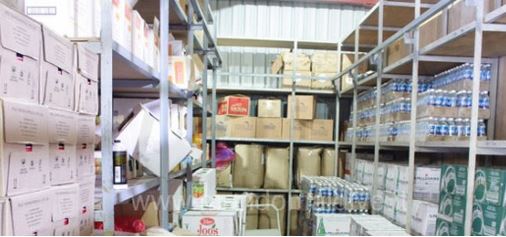WAREHOUSE MANAGEMENT. A restaurant from a logistic point of view is a real production system that transforms the raw material (the various ingredients) into a finished product (the dish).

Production system
WAREHOUSE MANAGEMENT
To avoid a disaster in your restaurant, it is important to have well-organized supplies.
A good way for any chef or cook who wants to open their own restaurant is to have an organized kitchen with quality equipment and all the essential ingredients needed at hand, so you never run out of money when customers arrive unexpectedly!
The “industrial” component must be added the service at the tables, the creativity of the chef, the furnishing of the room and so on.
Considering the restaurant as a productive system facilitates stock management.
It also allows you to apply the management models developed for industrial production.
The restaurant production system is configured as an MTO (make to order) system.
The dish is made only when the customer orders it.

There are no stocks of finished products except for some exceptions such as sweets that should be put in the window.
Another feature of the restaurant is the presence of a bill of materials composed of a single level, a single ingredient.
We consider semi-finished fresh pasta or other basic preparations for the kitchen.
These elements allow us to determine the inventory management system.
WAREHOUSE MANAGEMENT
Obviously it will be related to raw materials and some semi-finished products. Let’s consider the characteristics of some logistic elements such as the deadlines of raw materials.
The warehouse usually has limited spaces and areas dedicated to specific products such as the cold storage warehouse or the celphone are required.
Finally, the management of sales must be considered.
This can include a fixed menu or an à la carte menu.
WAREHOUSE MANAGEMENT
In the first case for the management of stocks it is necessary to provide only the quantities purchased, while in the a la carte menu we must also provide the type of products.
These features allow us to identify a mixed stock management technique. It means that some raw materials are managed in demand and the others are restored.
In the case of a fixed menu, demand management will be indicated for many raw materials. In the case of a la carte menu, we will expand the management to recovery.
Among the various raw materials, fresh products and those that are present in very few dishes need to be managed as needed. Products that have a longer expiry or are present in many dishes can be managed to restore.
WAREHOUSE MANAGEMENT
A correct inventory management can not be separated from the presence of an information system that allows us to have the history of sales, recipes, and inventory.
The raw materials affect the turnover of a restaurant on average around 30-35%, so being able to optimize the inventory contributes significantly to increase the profit or be able to lower the selling price by allowing customers to increase.
There are several software specifically designed for the management of a restaurant.
In the case of a small business, do not try to get away with a spreadsheet and a recipe database. You will lose the money saved in hours to run after the problems.
And make sure you spend quality.
I recommend RISTOMANAGER, download the free version, try it. You will realize how much time you could already be saved and how much you can earn from every feature of the management software.
Then it leaves the program and the numbers dedicated to customers and creativity.
Read also: How to manage a restaurant in the suburbs: 4 golden rules


